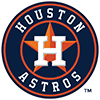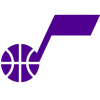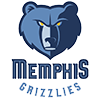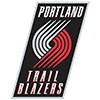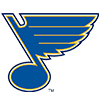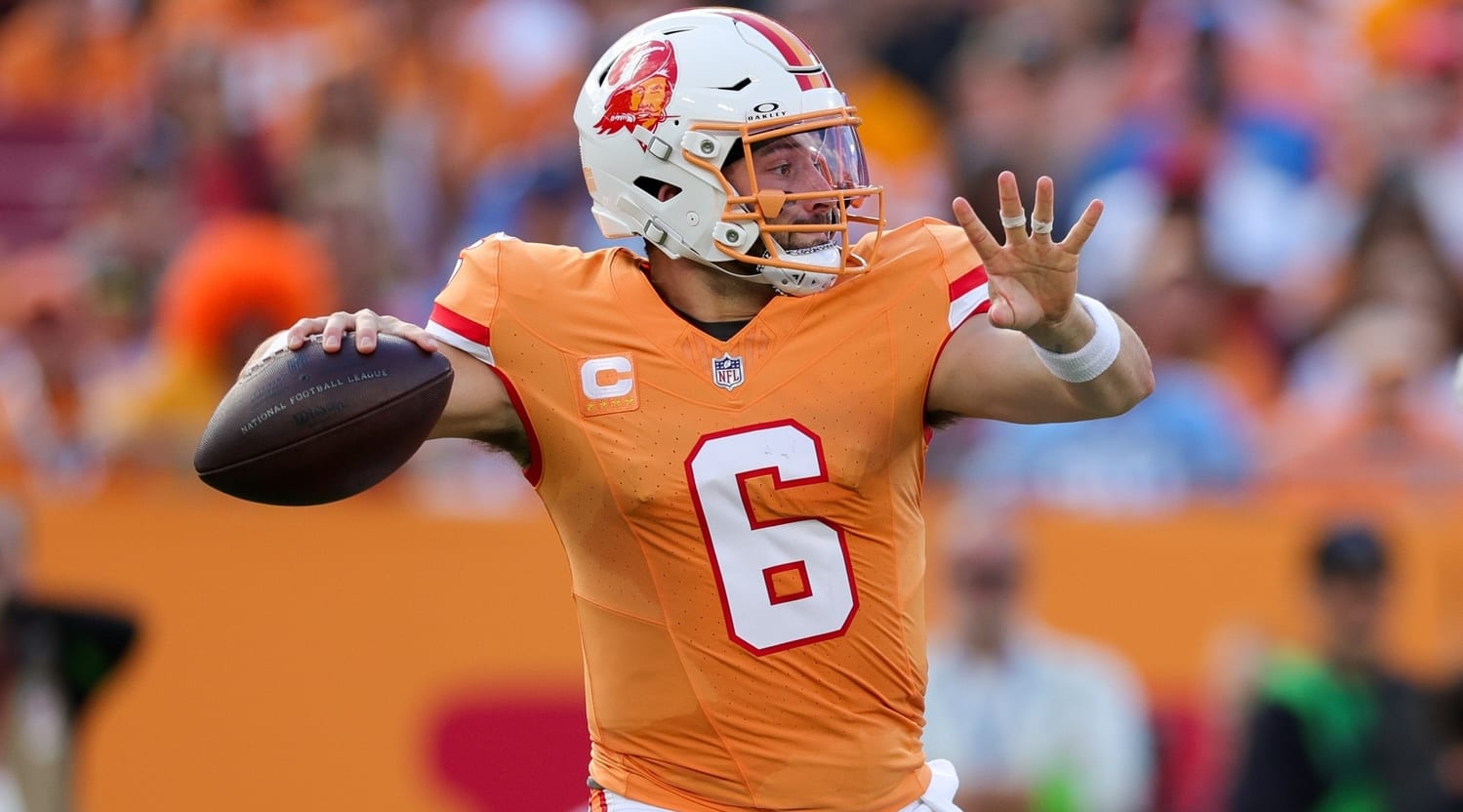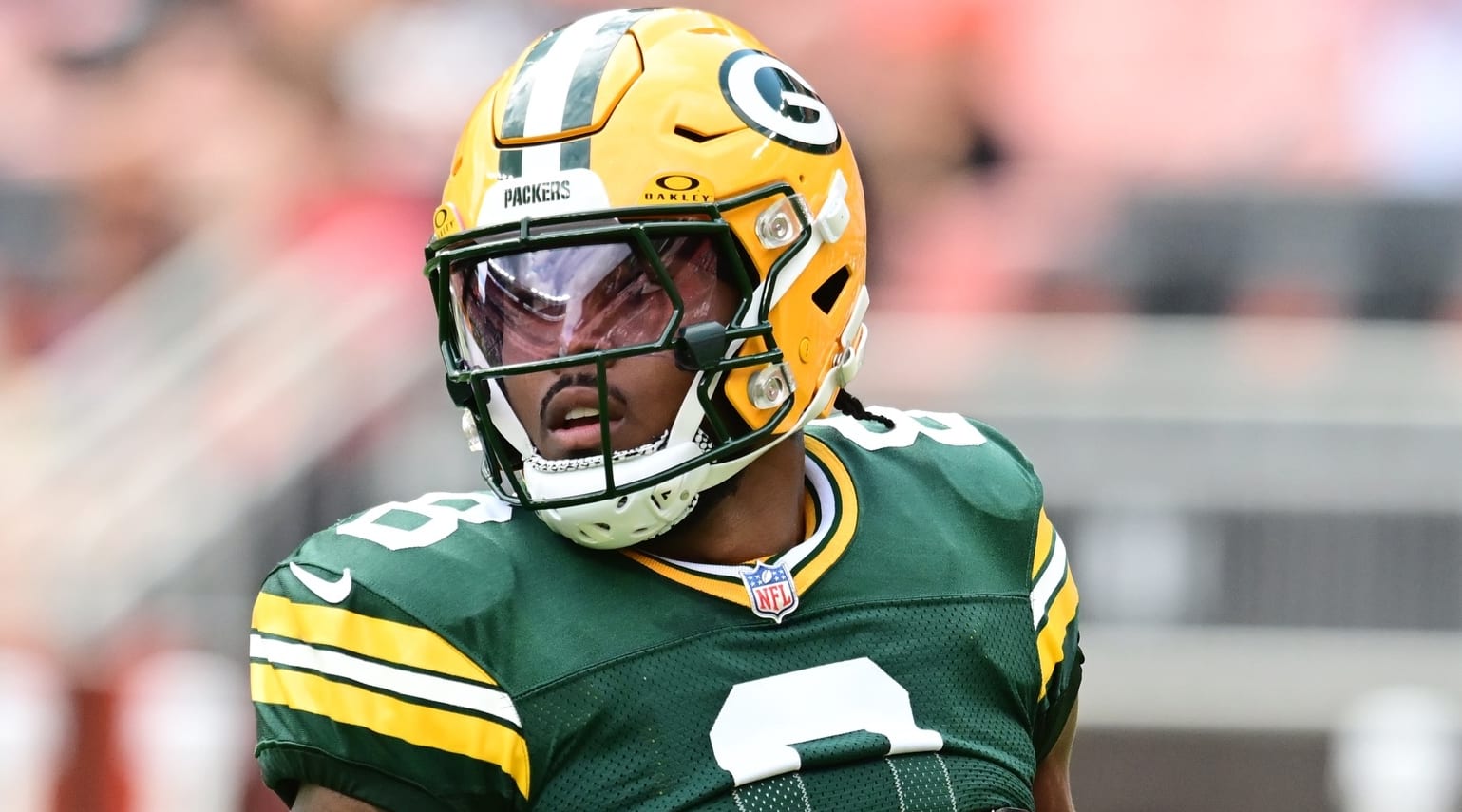The combine holds a great deal of sway over the final rankings going into the NFL Draft, but the general shape of the draft is still mostly apparent. This article contains pre-combine dynasty football rankings for the 2025 NFL Draft class – positional rankings containing 12 quarterbacks, 30 running backs, 40 wide receivers and 12 tight ends, with a top-50 overall combining those positional rankings into one list.
First, the top 50 overall, which is broken into tier form with player blurbs underneath the initial list. If two or more players within a tier at the same position have the same round projection I will combine their respective blurbs into one subsection.
- Ashton Jeanty, RB, Boise State
- Omarion Hampton, RB, North Carolina
- TreVeyon Henderson, RB, Ohio State
- Tetairoa McMillan, WR, Arizona
- Quinshon Judkins, RB, Mississippi
- Jayden Higgins, WR, Iowa State
- Tre Harris, WR, Mississippi
- Tyler Warren, TE, Penn State
- Colston Loveland, TE, Michigan
- Cam Skattebo, RB, Arizona State
- Jalen Royals, WR, Utah State
- Matthew Golden, WR, Texas
- Luther Burden, WR, Missouri
- Emeka Egbuka, WR, Ohio State
- RJ Harvey, RB, UCF
- Devin Neal, RB, Kansas
- Kaleb Johnson, RB, Iowa
- Cam Ward, QB, Miami (FL)
- Jordan James, RB, Oregon
- Jaylin Noel, WR, Iowa State
- Jack Bech, WR, TCU
- Travis Hunter, WR/CB, Colorado
- Mason Taylor, TE, LSU
- Gunnar Helm, TE, Texas
- Jaxson Dart, QB, Mississippi
- Elijah Arroyo, TE, Miami (FL)
- Oronde Gadsden, TE, Syracuse
- Harold Fannin, TE, Bowling Green
- Tahj Brooks, RB, Texas Tech
- Woody Marks, RB, USC
- Damien Martinez, RB, Miami (FL)
- Ollie Gordon, RB, Oklahoma State
- Kalel Mullings, RB, Michigan
- Jaydon Blue, RB, Texas
- Dylan Sampson, RB, Tennessee
- Ricky White, WR, UNLV
- Jacolby George, WR, Miami (FL)
- Elic Ayomanor, WR, Stanford
- Isaiah Bond, WR, Texas
- Pat Bryant, WR, Illinois
- Will Howard, QB, Ohio State
- Quinn Ewers, QB, Texas
- Shedeur Sanders, QB, Colorado
- Tai Felton, WR, Maryland
- Xavier Restrepo, WR, Miami (FL)
- Kyle Williams, WR, Washington State
- Tory Horton, WR, Colorado State
- Trevor Etienne, RB, Georgia
- Jarquez Hunter, RB, Auburn
- Bhayshul Tuten, RB, Virginia Tech
TIER 1 (1)
Ashton Jeanty, RB, Boise State (5-9, 215)
Jeanty is nuts. His collegiate production is only rivaled by players like Barry Sanders, Marshall Faulk, LaDainian Tomlinson and Travis Etienne. Depending on which team he lands on Jeanty could either be used as the Lightning component of a ground-heavy offense like Jahmyr Gibbs in Detroit, or a proper workhorse in an offense with a more moderate rushing workload.
Jeanty's from-scrimmage ability is crazy overall but it's worth remembering that he could catch upwards of 70 passes in an offense that has the opportunity for it -- Boise just stopped throwing him the ball in 2024 because Jeanty's rushing workload alone was so substantial (26.7 carries per game).
Projected round: 1
TIER 2 (3)
Omarion Hampton, RB, North Carolina (6-0, 220)
Hampton might have been a coveted 1.01 dynasty pick in other drafts, so whoever misses out on Jeanty shouldn't feel too bad if they 'settle' for Hampton at the 1.02 or later. He has an obvious three-down build and skill set both, and while Hampton's speed isn't obvious on tape his high school 100m times hint at a potential sub-4.50 40, which would be exceptional (though far from required) at Hampton's sturdy build.
Projected round: 1-2
TreVeyon Henderson, RB, Ohio State (5-11, 208)
Henderson isn't as locked in as Hampton, in my opinion, but if Henderson's pre-draft testing clears certain hurdles it would allow projections to trend toward the higher-range of potential outcomes, and Henderson's higher-range outcomes could present unique upside. I'm the slightest bit concerned Henderson might be a little upright and lack the anchor to be a high-volume candidate for power rush concepts, but even if so there might be 70-catch upside in Henderson's game as a receiver, and if he secures that type of NFL usage he would prove an explosive fantasy asset, probably to an RB1 extent.
Projected round: 1-2
Tetairoa McMillan, WR, Arizona (6-5, 212)
I'm still a big fan of McMillan, but there might be some quibbling about his hands and his twitchiness off the line. I would lean toward the explanation that any seeming Stiffness with McMillan off the line or/and against press coverage is mostly an optical illusion -- McMillan looks like a legit 6-foot-5 and at that unusual height he will almost categorically look 'slow' compared to receivers who are a half a foot or more shorter than him.
The catch rate is the more interesting concern to me, and admittedly I am bothered that McMillan's catch rate never cleared the Arizona baseline. Still, I don't think this is another Quentin Johnston situation. McMillan's production is several magnitudes better than what Johnston showed at TCU, and McMillan gets a slight pass for his catch rate if only because his targets were so ambitious. McMillan does enough stunt catches that I'm willing to look past mistakes that seem mundane in comparison to the uncommon successes. I'd put it this way: with Johnston you worry he might drop any pass, whereas with McMillan you worry he might drop the difficult ones. I think it can be at once true that McMillan's hands are average and it's still overruled by positives in other areas of his game.
Projected round: 1
TIER 3 (4)
Quinshon Judkins, RB, Ohio State (6-0, 219)
I'm probably higher on Judkins than most are at this point, and even listing him behind Henderson is more an acknowledgment of today's PPR reality than it is a belief that Henderson is truly 'better.' Henderson is the better receiver and big-play threat, but Judkins looks good as a receiver in his own right in my opinion and as a pure power runner Judkins looks pretty much awesome to me. If Judkins faded from focus in the presence of Henderson then I think it's just a testament to Henderson that doesn't at all occur at Judkins' expense. I think Judkins will be one of the league's leading rushers over the next five years, and if he falls to the third round I expect that team will get a big steal.
Projected round: 2
Jayden Higgins, WR, Iowa State (6-4, 217)
Tre Harris, WR, Mississippi (6-3, 210)
Jayden Higgins (Eastern Kentucky) and Tre Harris (Louisiana Tech) both transferred from smaller schools before dominating at the highest levels of the FBS, despite seemingly getting no recruiting attention from those levels.
Harris was a fifth-year player and is more likely 6-foot-2 than 6-foot-3, but he either way looks imposing from the boundary and gets some leniency on the age question since he was also very productive at Louisiana Tech.
Higgins was a fourth-year player and gets no age-adjustment penalty, meanwhile he was particularly productive in the last three seasons. Higgins appears to have an uncommon ability to create quick separation for a receiver his build, to the point that I don't really think it affects his evaluation much even if his 40 time trends toward the 4.6 mark. As long as he can keep landing jabs from the boundary defenses might risk the big play by trying to reduce the cushion.
Projected round: 1-2
Tyler Warren, TE, Penn State (6-6, 261)
It's tough to question Warren after the historical 2024 season he had, even if the prior three years were less productive. Warren played a ton of snaps those years, so the likely explanation for his 2024 breakout would probably be Penn State's decision to have him block less as opposed to his age (23 in March). As a former quarterback Warren offers wildcat quarterback potential in addition to advanced and varied applications as a receiver, and he should do well in pre-draft athletic testing.
Projected round: 1
TIER 4 (2)
Colston Loveland, TE, Michigan (6-5, 245)
Loveland isn't as varied from scrimmage as Warren and doesn't project as well as a blocker, but Loveland is on an acceptable course with his inline projection and there's otherwise reason to think he'll compel a three-down role early in his NFL career for pass-catching reasons. Loveland will be only 21 in April, making his receiving production from the past two seasons all that much more impressive. If Loveland's pre-draft athletic testing is good he could project uniquely well as an NFL pass-catching threat.
Projected round: 1
Cam Skattebo, RB, Arizona State (5-11, 215)
Skattebo is at risk of running a 4.65-second 40 or worse, and admittedly I might need to knock him down a tier if he does. Skattebo's appeal never had anything to do with speed -- it's his unique workhorse ability, power, balance and vision that gives him high fantasy upside -- but when you start approaching that 4.70 mark you invite the risk of approaching fullback-like territory from scrimmage.
Skattebo's temperament might be as much of an issue as his lack of speed. That he indignantly says he's the best running back in the country while Jeanty had the season he just did is arguably more delusional than proud, and he has shown self-centered aggressive tendencies aside from that. If teams start to doubt Skattebo's football character then the lack of speed won't be viewed as generously.
Projected round: 2-4
TIER 5 (8)
Jalen Royals, WR, Utah State (5-11, 210)
Matthew Golden, WR, Texas (6-0, 195)
Luther Burden, WR, Missouri (5-11, 210)
Emeka Egbuka, WR, Ohio State (6-1, 205)
I might be a little lower on these receivers than most observers, especially in the cases of Luther Burden and Emeka Egbuka, but it's more agnosticism than doubt specifically. If either of them does well in pre-draft athletic testing I'll be able to see the optimist's side more easily.
For now I'm concerned that the breadth of Burden's skill set might be limited somewhat, while in Egbuka's case I'm worried that he was a steady producer rather than a dominant one. Deebo Samuel and Terry McLaurin respectively had similar production themes in college and turned out great in the NFL, but in both cases they lit up the combine also.
Meanwhile, track figures from Jalen Royals and Matthew Golden gives reason to suspect both will do well or better in pre-draft testing, with Royals offering the most upside of this group while Golden maybe offers a bit more polish and immediate readiness.
Projected round: 2
RJ Harvey, RB, UCF (5-8, 207)
Devin Neal, RB, Kansas (5-11, 220)
Kaleb Johnson, RB, Iowa (6-0, 220)
RJ Harvey is smallish and less than fast, but his short-area movement and thus most movements pertinent to running back functions grade about as well as anyone. Harvey's low center of gravity lends natural anchor even without him being physically strong, and meanwhile his spatial processing is close to instant. I think he could prove a unique player from scrimmage in the NFL.
Devin Neal might not be a top tester at the combine but his skill set and trait breadth is excellent to the point that it's easy to imagine him getting his foot in the door of some offense, even one with a previously established group of runners, because the fact that he seems to do well with any task means any playing time he sees will probably lead to an expectation of increased playing time. Neal also grades uniquely well for volume capability.
I might be a little lower on Kaleb Johnson than most, but a strong combine could ease my concerns. More specifically, I think Johnson's gait is a bit upright to the point that he doesn't have as much natural anchor as you'd expect of a 220-pound back. The denser he weighs in the better, because the higher the center of gravity the easier it is to either get clotheslined high or get your feet knocked from under you low. Anchor concerns can be alleviated a bit either way by demonstrating plus speed and elusiveness, so it would be reassuring if Johnson could run and jump well in addition to weighing in at a sound density.
Projected round: 3
Cam Ward, QB, Miami (FL) (6-2, 223)
Ward looks more like 6-feet tall than 6-foot-2, and beyond that he doesn't have any standout athletic traits. I think Ward is plainly not worth a top five pick, but it seems by most or all accounts he is expected to be at least that, if not the first overall pick. Ward does have some kind of knack for sensing possibility in a given play and knows how to wait out a big play opportunity, but I'm just not convinced he'll be able to throw over the middle with volume. I think Ward is the kind of quarterback who can give a team a standout number of big plays but only on a modest pass attempt volume. If Ward is throwing 35-plus times it might mean a loss most weeks. I think the best-case scenario for Ward is emerging as a Brock Purdy/Tua Tagovailoa type of quarterback -- one who can make some nice throws but mainly when you're not putting too much pressure on him.
Projected round: 1
TIER 6 (7)
Jordan James, RB, Oregon (5-10, 210)
In some regards James' production at Oregon was self-evidently excellent, matching or imitating the standards of recent teammate Bucky Irving or almost any running back nation-wide, but there are some ambiguities too at the moment. As much as James' movement is clearly good and his running is consistently rugged, his size-adjusted athleticism isn't obvious and, arguably more concerningly, he seemed to cede some passing-down snaps to Noah Whittington in 2024.
Sometimes it hints at a pass-blocking or pass-catching deficiency when a running back leaves the field on passing downs, but it's also possible for an otherwise good passing-down back to leave on passing downs merely because the back rotating in is so uniquely good for that function. Judkins and Henderson at Ohio State could be a quick example of this. In other words, the better Whittington proves to be, the better it bodes for James' NFL projection. For what it's worth, Whittington has a good chance of at least sticking around NFL practice squads for a while.
Projected round: 3-4
Jaylin Noel, WR, Iowa State (5-10, 196)
Jack Bech, WR, TCU (6-1, 212)
Some might dismiss Jaylin Noel as a Slot Receiver, but if so I think he's the Christian Kirk sort -- ie, one who is at best in the slot but can play just fine on the boundary, if ideally on an occasional basis. Noel's production at Iowa State was excellent and he should test decently well in pre-draft athletic testing.
Jack Bech was actually in the same LSU recruiting class as Malik Nabers and Brian Thomas. Not only that, but in their true freshman year Bech ran ahead of Thomas and alongside Nabers, leading the trio in receptions that year. As Nabers and Thomas ascended Bech fell down the depth chart, though, precipitating a transfer to TCU. Bech's target share at TCU was somewhat disappointing, but it's possible that it's no bad reflection on Bech given that TCU had deep and experienced wide receivers this year, with at least one other (Savion Williams) expected to be drafted.
Projected round: 2-4
Travis Hunter, WR/CB, Colorado (6-1, 185)
Hunter barely needs an introduction, but in the meantime I can't rank him higher than this because my concern is that Hunter will never play more than 500 or so snaps at receiver in a given NFL season. If Hunter is as good or better of a cornerback as he is a wide receiver, then the simple fact is most teams would prefer him at corner first. If playing wide receiver full time causes his returns as a cornerback to diminish, then most teams will cut his snaps at receiver first. Hunter may well be some kind of freak capable of playing more snaps than any NFL player ever, but starting on both sides of the ball like in college basically is not a serious suggestion to me.
Projected round: 1
Mason Taylor, TE, LSU (6-5, 250)
Gunnar Helm, TE, Texas (6-5, 250)
The son of former Dolphins star pass rusher Jason Taylor, Mason is ostensibly the offensive version. Athletic testing will help clarify how much upside Taylor has at the NFL level, but in the meantime only his floor is a given. Taylor was a three-down player in all of his three seasons, but his pass-catching production regrettably never scaled up sufficiently to easily project standout NFL receiving upside. Assuming he doesn't test poorly at the combine, though, I think we can take for granted that Taylor will be at least an average starting tight end in the NFL.
Helm had to pay his dues as a blocker his first three seasons, and that three-year span of almost never catching the ball is otherwise a valid concern, but given that Ja'Tavion Sanders was there I think that could be forgiven as long as Helm's athletic testing is sufficient. Sanders was a uniquely dominant player for Texas, so the more important detail is the fact that Helm forced his way onto the field anyway, even if it was only as a blocker. It would make sense to suggest that Helm would have broken out as a receiver before 2024 if Sanders hadn't been there until 2023.
Projected round: 1-2
Jaxson Dart, QB, Mississippi (6-2, 226)
Dart clearly has some important positive traits -- good accuracy, a calm disposition in the pocket, above average mobility -- and maybe that's enough to make him a viable starter in the NFL. I still think that, despite being unrattled by pressure, there's probably some kind of hitch in his processing or trigger because with the exception of his 2024 senior season Dart never had the sort of completion percentage you would expect of a quarterback who you know can otherwise hit these targets that he must necessarily be missing for the completion percentage to land where it did. Throwing a pass too late is one example of how an otherwise accurate quarterback can miss the target, and I think Dart otherwise has shown a tendency to drop his eyes too quickly while moving away from pressure. To be fair to Dart, his numbers were at least good in all of his four collegiate seasons. I'm kind of worried that his upside is that of a Derek Carr/Andy Dalton type, but at the very least Dart should be one of the best backups in the NFL even if he disappoints as a starter.
Projected round: 1-3
TIER 7 (17)
Elijah Arroyo, TE, Miami (FL) (6-5, 251)
Harold Fannin, TE, Bowling Green (6-3, 238)
Oronde Gadsden, TE, Syracuse (6-4, 247)
Elijah Arroyo is listed this low for medical reasons, but if his knee history checks out fine then between his strong production and status as a former high recruit we have reason to expect Arroyo to do sufficiently well in athletic testing. It would be nice if he could log legitimately strong numbers to zip up any remaining doubt, but if the injury luck improves there is likely reason to think Arroyo can emerge as at least an average starting NFL tight end, including for fantasy purposes.
Harold Fannin is a guy I'm really rooting for and for whom I'd love to see the optimistic angle, but if he doesn't post borderline WR-viable athletic testing then it would leave his NFL projection in a difficult spot. Fannin was outrageously productive at Bowling Green and clearly has some amount of innate ability as a receiver. The question is whether he has sufficient athletic tools to win the same way at the NFL level. If Fannin does post strong workout numbers then at that point he should interest any team as a Big Slot target who only occasionally blocks otherwise. If he has the athletic tools, then there's reason to think Fannin has the skill set to really run with an opportunity. On the other hand, Fannin doesn't turn 21 until late July, which at once reflects favorably on his collegiate production but also invites the possibility that Fannin needs a redshirt year while his age catches up to the level of competition.
Oronde Gadsden is largely the same theme as Fannin -- a Big Wideout more than a true tight end, and thus a prospect who needs to test sufficiently to convince teams he can win at the NFL level the same way he did in college. Gadsden's father (Oronde Sr.) was one of the slower wideouts in the NFL, but the younger Gadsden is a lot bigger and if the speed is otherwise comparable it should play better at tight end than it did for the senior Gadsden in the NFL.
Projected round: 2-4
Tahj Brooks, RB, Texas Tech (5-9, 229)
Woody Marks, RB, USC (5-10, 215)
Damien Martinez, RB, Miami (FL) (5-11, 226)
Ollie Gordon, RB, Oklahoma State (6-1, 233)
Kalel Mullings, RB, Michigan (6-2, 233)
Jaydon Blue, RB, Texas (6-0, 200)
Dylan Sampson, RB, Tennessee (5-11, 201)
Tahj Brooks is a player I didn't expect to be so high on, but his profile is difficult to criticize, in my opinion. I do wish Brooks had a little more clearly outplayed SaRodorick Thompson -- a Texas Tech teammate who was in the CFL last year after bouncing around as a tryout/practice squad guy for two years -- but Brooks' pro projection should be better for tool-trait reasons at the very least. Thompson was a 4.65 guy at around 205 pounds, but Brooks' expected build of around 5-foot-9, 220-to-230 pounds is far preferable and I don't see the tape-based reason to expect Brooks to run any worse than a 4.65. Brooks might be similar to a player like C.J. Anderson.
Woody Marks originally played for Mike Leach at Mississippi State, and he saw a ton of passing down reps as a result. Marks might be one of the five fastest running backs in the draft and runs with tons of motor, but his returns from scrimmage kind of lag relative to what you'd expect from a player as fast and quick as Marks. Usually that hints at a hitch in the vision, balance -- some thing or another. You might compare Marks to someone like Jerick McKinnon for that reason, but the better the offensive line is the less the vision matters, and Marks can otherwise eat up space.
Damien Martinez is a very interesting player, if only because it's difficult to pin down what exactly he is. As a bigger back Martinez more or less runs with the power you'd expect, but at a glance I feel like he just doesn't look as big as he is, and combining that detail with his consistently explosive rushing production, both at Miami and Oregon State, makes me ponder whether he might be a little faster than he 'looks' on tape. And yet, even as a big-play power back with consistently explosive returns, Martinez was not a workhorse at either Oregon State or Miami. Sometimes things like this happen for no reason, but if it turns out that there basically was no reason in either case then at that point it's not obvious why Martinez's explosive production couldn't scale up to a workhorse role.
Going into the 2024 season Ollie Gordon was expected to be the RB2 at worst in this class, but his numbers fell off a cliff -- cut almost literally in half -- from the 2023 season where he ran for 1,732 yards and 21 touchdowns. Gordon's touchdown production remained excellent -- 13 on 190 caries -- but the 4.6 yards per carry was a major decline from the 6.1 figure in 2023. Gordon is still an interesting prospect, but his 2024 struggles might at least indicate that he needs a little room to get moving. If Gordon doesn't have room to pick up momentum he's easier to take down, and he might not create enough on his own to get over the issue when dealing with ineffective blocking.
Kalel Mullings pretty much sent Donovan Edwards to the bench in 2024, which makes it easier for me to get over how Mullings' breakout at running back otherwise didn't occur until his fourth year. With no context that detail would normally be a red flag, but Mullings' case is excusable because he was initially an edge defender at Michigan before they moved him to running back at some point in his third year. Edwards is a formerly hyped recruit who was even on the cover of the college football video game, so for Mullings to take the backfield away from Edwards in under two years I think demonstrates something uncommon in Mullings. Mullings is definitely taller than ideal -- hopefully he measures in well south of 6-foot-2 or otherwise has his weight up around 240 -- but on tape it looks like he has unusual flexibility and balance for someone his height. If the pitfalls of being Too Tall at running back don't apply as much to Mullings, then he might be an exception to the rule, but he needs to log strong athletic testing to make the projection a sound one.
Jaydon Blue isn't a serious workhorse candidate at the next level but a James Cook-like trajectory could be possible. At the very least Blue has already demonstrated unique pass-catching utility, and he's a good bet to log the fastest 40-yard dash among the draft's running backs.
If Blue doesn't log the fastest 40-yard dash among the running backs then Dylan Sampson is maybe the best bet otherwise, but my concern with Sampson is that he seems rather awkward on passing downs, and as a pure runner I'm not sure he has much more than the raw speed. Teams sometimes expect their smaller running backs to be passing-down backs, if only because teams want their top backup to be capable on passing downs in the event that the starter is unavailable. In other words, I'm concerned that if Sampson doesn't develop other aspects of his game it would be easy for him to end up an RB3 for a while.
Projected round: 4-5
Ricky White, WR, UNLV (6-1, 179)
Jacolby George, WR, Miami (FL) (5-11, 168)
Elic Ayomanor, WR, Stanford (6-2, 210)
Isaiah Bond, WR, Texas (5-11, 180)
Pat Bryant, WR, Illinois (6-2, 208)
Ricky White was awesome at UNLV, and his status as a former quality Michigan State recruit lends additional reason to think White could test well enough athletically to land himself in Day 2 of the draft. White also curiously, encouragingly had a massive game against Michigan during his true freshman season, torching a strong Wolverines pass defense for 196 yards and one touchdown on eight catches and 10 targets. White is also a uniquely good punt blocker, which will only win him more fans on coaching staffs.
Jacolby George seems like a Jordan Addison type, which to me is a clear positive overall. I don't think George is on Addison's level specifically, but I do think George is pretty easily the best Miami wideout in this draft.
Elic Ayomanor should test better in the 40 than Michael Wilson (4.58), but he has a similar sort of vibe overall -- bigger wideout with a clear possession game but not much certainty beyond that at the moment. There's probably more big-play ability to Ayomanor, though, if only after the catch.
Isaiah Bond should be one of the fastest receivers at the combine -- something in the low 4.3s wouldn't surprise -- and his production was otherwise solid at both Alabama and Texas. Bond doesn't really seem to have the traits of a target hog, but he should have a good shot at emerging as a big-play oriented starter in the NFL.
Pat Bryant was always automatic with his usage at Illinois, and his delayed breakout can arguably be excused by the fact that he was playing under two upperclassmen players currently in the NFL (Casey Washington and Isaiah Williams).
Projected round: 3-4
Will Howard, QB, Ohio State (6-4, 235)
Quinn Ewers, QB, Texas (6-2, 210)
Will Howard was a decent starter at Kansas State before his excellent 2024 season at Ohio State. The question is whether his improved numbers at Ohio State were more indicative of Ohio State being an offense where failure was impossible or instead an indication that the Kansas State offense was one where no quarterback could succeed. Howard has a lot to work with as far as build, arm strength and athleticism, and I'm probably higher on him than most people.
Quinn Ewers became something of a punchline for how disappointing he was as a mega-recruit at Texas, but honestly I don't think he's any worse than Ward or Shedeur Sanders. Ewers is at once a player that doesn't interest me much but also one who I think might go higher than expected. If you apply the same level of expectation-informed scrutiny to Ward and Sanders as people did Ewers I'm not convinced Ward and Sanders pass the test.
Projected round: 1-3
TIER 8 (7)
Shedeur Sanders, QB, Colorado (6-2, 215)
Sanders is very well-trained as a quarterback and clearly has a refined sense of how to play the position, but he's surprisingly immobile and might not have the throwing velocity to make the throws he might otherwise accurately identify as the correct target at the NFL level. His poor rushing yardage numbers are definitely explained in part by Colorado's bad pass blocking, but it doesn't explain his poor rushing numbers from Jackson State. If I picked Sanders in a dynasty draft it would probably be to trade him before he plays.
Projected round: 1
Tai Felton, WR, Maryland (6-1, 186)
Xavier Restrepo, WR, Miami (FL) (5-9, 200)
Kyle Williams, WR, Washington State (5-10, 182)
Tory Horton, WR, Colorado State (6-3, 185)
Tai Felton had been highly efficient on a low target count the two years prior, but in his 2024 senior season Felton's target rate drastically increased, potentially transforming his prospect profile in the process. While drawing 30.2 percent of Maryland's targets Felton still cleared the Maryland baselines in both completion rate and yards per target. If Felton tests well athletically then he should project as viable from both the slot and boundary.
Xavier Restrepo doesn't show as much boundary ability as his teammate Jacolby George, but Restrepo is arguably close to the modern prototype at slot receiver. As if to keep up with the emergence of the Big Slot, Restrepo offsets his 5-foot-9 lack of height with a 200-pound frame ready to block on run downs. Restrepo being slot-dependent is not ideal for his fantasy projection -- it leaves his path narrower than if he could also draw a three-down role on the boundary -- but there is some reason to think Restrepo might succeed in the event that he is given an opportunity as a team's lead slot receiver.
Tory Horton is probably more like 6-foot-2 and would ideally be heavier than he is, but in a league where skinny receivers are increasingly allowed there might be enough in Horton's profile to be something like a poor man's Troy Franklin.
If Horton is a poor man's Franklin then Kyle Williams is a poor man's Marvin Mims. Williams' modest target rate implies that he will need to make big plays in the NFL to offset the lagging target projection, so it's important for him to prove he has real NFL deep speed.
Projected round: 4-5
Trevor Etienne, RB, Georgia (5-9, 201)
Jarquez Hunter, RB, Auburn (5-9, 212)
Bhayshul Tuten, RB, Virginia Tech (5-9, 211)
Trevor Etienne doesn't offer as much speed or size as his brother, but he might be a little better as a pass catcher and is well-rounded overall otherwise. Etienne doesn't have a compelling profile but might be just good enough at most things to appeal to most teams. I think he looks like a potential Gio Bernard type -- more slick than fast but generally useful.
Jarquez Hunter has a blend of motor, speed and strength that would make him a productive runner at the NFL level, in my opinion, but he seems sketchy on passing downs and might therefore have trouble getting his foot in the door without injuries ahead of him. Hunter's hard running and explosive athletic traits should keep him around as an RB3 type for some team, though.
Bhayshul Tuten probably offers a bit more speed and a bit less power than Hunter on an otherwise similar frame. Unfortunately, like Hunter, Tuten is sketchy at best on passing downs. Tuten seems very obviously explosive with the ball, but when he transferred from North Carolina A&T to Virginia Tech his pass-catching production collapsed (69.0 percent catch rate, 4.5 YPT).
Projected round: 5
POSITIONAL RANKINGS
QUARTERBACKS
- Cam Ward, Miami (FL)
- Jaxson Dart, Mississippi
- Will Howard, Ohio State
- Quinn Ewers, Texas
- Shedeur Sanders, Colorado
- Jalen Milroe, Alabama
- Tyler Shough, Texas Tech
- Dillon Gabriel, Oregon
- Kyle McCord, Syracuse
- Seth Henigan, Memphis
- Riley Leonard, Notre Dame
- Kurtis Rourke, Indiana
RUNNING BACKS
- Ashton Jeanty, Boise State
- Omarion Hampton, North Carolina
- TreVeyon Henderson, Ohio State
- Quinshon Judkins, Ohio State
- Cam Skattebo, Arizona State
- RJ Harvey, UCF
- Devin Neal, Kansas
- Kaleb Johnson, Iowa
- Jordan James, Oregon
- Tahj Brooks, Texas Tech
- Woody Marks, USC
- Damien Martinez, Miami (FL)
- Ollie Gordon, Oklahoma State
- Kalel Mullings, Michigan
- Jaydon Blue, Texas
- Dylan Sampson, Tennessee
- Jarquez Hunter, Auburn
- Bhayshul Tuten, Virginia Tech
- Trevor Etienne, Georgia
- Raheim Sanders, South Carolina
- LeQuint Allen, Syracuse
- Kyle Monangai, Rutgers
- Donovan Edwards, Michigan
- Phil Mafah, Clemson
- DJ Giddens, Kansas State
- Jacory Croskey-Merritt, Arizona
- Brashard Smith, SMU
- Ja'Quinden Jackson, Arkansas
- Tre Stewart, Jacksonville State
- Montrell Johnson, Florida
WIDE RECEIVERS
- Tetairoa McMillan, Arizona
- Jayden Higgins, Iowa State
- Tre Harris, Mississippi
- Jalen Royals, Utah State
- Matthew Golden, Texas
- Luther Burden, Missouri
- Emeka Egbuka, Ohio State
- Jaylin Noel, Iowa State
- Jack Bech, TCU
- Travis Hunter, Colorado
- Ricky White, UNLV
- Jacolby George, Miami (FL)
- Elic Ayomanor, Stanford
- Isaiah Bond, Texas
- Pat Bryant, Illinois
- Tai Felton, Maryland
- Xavier Restrepo, Miami (FL)
- Kyle Williams, Washington State
- Tory Horton, Colorado State
- Savion Williams, TCU
- Mario Williams, Tulane
- Arian Smith, Georgia
- Ja'Corey Brooks, Louisville
- Theo Wease, Missouri
- Konata Mumpfield, Pittsburgh
- KeAndre Lambert-Smith, Auburn
- Antwane Wells, Mississippi
- Nick Nash, San Jose State
- Andrew Armstrong, Arkansas
- Kobe Hudson, UCF
- Jackson Meeks, Syracuse
- Dante Wright, Temple
- Elijhah Badger, Florida
- Chimere Dike, Florida
- Jamaal Pritchett, South Alabama
- Tez Johnson, Oregon
- Jordan Watkins, Mississippi
- LaJohntay Webster, Colorado
- Josh Kelly, Texas Tech
- Dominic Lovett, Georgia
TIGHT END
- Tyler Warren, Penn State
- Colston Loveland, Michigan
- Mason Taylor, LSU
- Gunnar Helm, Texas
- Elijah Arroyo, Miami (FL)
- Harold Fannin, Bowling Green
- Oronde Gadsden, Syracuse
- Moliki Matavao, UCLA
- Terrance Ferguson, Oregon
- Thomas Fidone, Nebraska
- Jake Briningstool, Clemson
- Gavin Bartholomew, Pittsburgh









